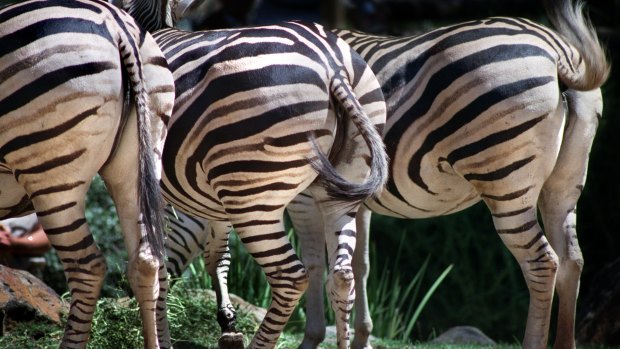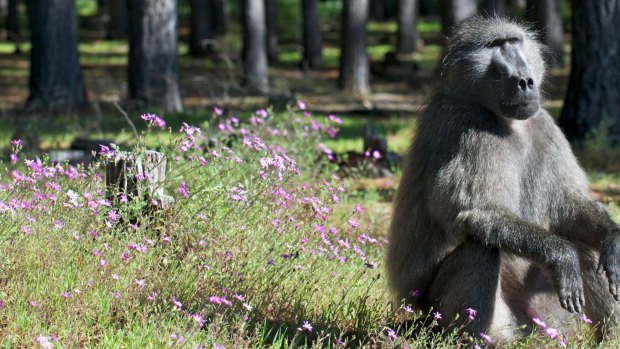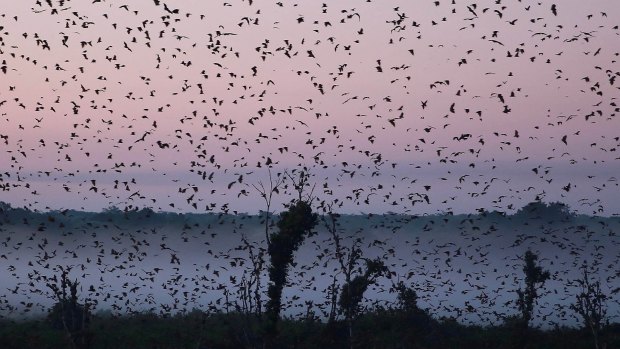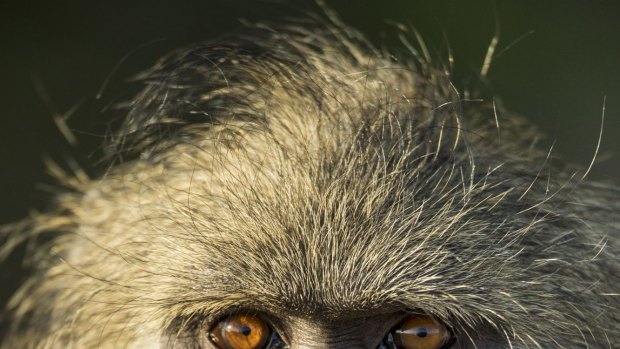By Jason Bittel
Do baboons pass wind? What about salamanders? Millipedes?
These questions sound like the sort Bart Simpson might have asked to derail science class. But real-life scientists are now taking to Twitter to provide answers. So far, they've created a hashtag – #DoesItFart – and a Google spreadsheet that details the flatulence habits of more than 60 animals.

Zebras are also among those creatures that pass wind. Credit: Jerry Galea
So, which animals cut the proverbial cheese? Tons, it turns out. Bats do, according to David Bennett, a PhD candidate at Queen Mary University of London. And the bigger they are, the harder they honk.
Rats, zebras and bearded dragons are also among those creatures that pass wind. Birds, on the other hand, do not seem to have a biological need to do so but they could let one rip, theoretically. Marine invertebrates such as oysters, mussels and crabs? Alas, they are whoopee-impaired.

Baboons are capable of dropping some bombs. Credit: iStock
The science of flatulence is not just about potty humour, by the way. Cattle gas, for example, is a significant contributor to atmospheric methane that contributes to climate change. And fauna flatulence is also a hot topic among certain crowds – ones scientists want to engage.
"Does it fart?" is one of most frequent questions zoologists receive from kids, said Dani Rabaiotti of the Zoological Society of London. In fact, the whole #DoesItFart adventure started when her teenage brother asked if snakes ever experience flatulence. Rabaiotti knew from her own work that the wild dogs of Africa definitely pass wind, as do the extremely gassy seals that reside on the Atlantic island of South Georgia. But she wasn't sure about snakes, so she consulted snake expert David Steen.
The short answer is yes, says Steen, a wildlife ecologist at Auburn University. "Snakes sometimes discharge faeces and musk as a defensive strategy, and this is often accompanied by what I would consider classic fart noises," he said.
Steen says this is far from the first time he's fielded this question, because it seems to be a favourite of the preteen crowd.

Bats are also among the ranks of animals that pass wind.Credit: Catherine Marshall
"I don't know if animal flatulence questions can serve as a significant gateway to a greater appreciation of biodiversity, but it is always fun to see what captures people's attention," he said. "It is at least an opportunity to engage with a larger audience and bring new folks into the conversation."
And if engagement is the goal – or at least a byproduct – does it really matter what the topic is? "Just because it's flatulence doesn't mean it's inherently silly," said Adriana Lowe, a researcher of biological anthropology at the University of Kent in Britain. "The diets and digestive systems of animals are an important and fascinating field of study, and gas is just a part of that."

Female baboons with swollen genitals are the worst.Credit: Danita Delimont
Lowe studies chimpanzees in Uganda's Budongo forest, animals whose gas appears to vary with their diet. "Fruit is tootier than leaves, and figs seem to be the worst offenders," she said. On occasion, these bodily functions have even aided in her research. "Several times I have been with one or two chimps and not been aware others are nearby until the farts start," says Lowe. "Some of them have that very long, air-being-released-from-a-balloon quality, which is handy because it gives you a bit longer to pinpoint where it's coming from."
#DoesItFart is only the latest in a series of spur-of-the-moment hashtags created by scientists and snickered at by the general public (such as: #JunkOff and #FieldWorkFail). And then there are longer-running, single-scientist efforts, like the snake identifications Steen provides by way of the hashtags #NotACopperhead and #NotACottonmouth.
Similarly, Michelle LaRue, a research ecologist at the University of Minnesota, hosts a game in which she posts pictures of cats big and small and asks followers to guess whether the animal is a #CougarOrNot. And Kaeli Swift, a PhD student at the University of Washington, orchestrates a game called #CrowOrNo. (Note: Both games are far more difficult than they might sound.)
At this point, I should probably tell you that I also have a hashtag. It's called #ButtOfWhat, and its premise is simple: Educate and entertain while talking about animal backsides. Is it a bit of a childish gimmick? Sure. But I guarantee you'll learn a thing or two by following along. (For instance, porcupine coitus involves a fair bit of screaming.)
This is also why I follow hashtag games like #DoesItFart – every one is an opportunity to learn weird and wonderful facts about animals, and they can also provide a glimpse into the lives of scientists.
"When scientists can present these seemingly silly facts, it invites people to be part of what we know and to find out what we don't, which enables us to show how science works," said Cassandra Raby, a researcher with the Zoological Society of London, who confirms that baboons can drop some bombs. (Females with swollen genitals are the worst, by the way.)
You could also make the argument that diversions such as these provide scientists with a chance to share data they might otherwise leave in a notebook.
"We spend a lot of time with our study organism and see some interesting or weird behaviours," said Nick Caruso, a researcher of salamanders (which do not pass wind) at the University of Alabama and creator of the open-access #DoesItFart spreadsheet. "This type of info, unless directly relevant to the study, may not make it into our publications and we don't always get a chance to talk about it."
So some people are interested in these games for the outreach or data collection they provide, while others just see them as good old fashioned fun. Me? I'm obviously in it for the butts. And I've already got my next topic lined up: Millipedes.
Whereas most animals that pass wind have soft, fleshy derrieres, millipedes have hard valves that probably act as silencers for their toots, said Angie Macias, a graduate student studying forest pathology at West Virginia University. What's more, research has shown that the arthropods create quite a bit of methane in their intestines, and that gas has only one place to go – out the back.
"Put it all together, and I would say that millipede toots are probably very smelly, and definitely flammable," says Macias.
Silent, in other words. But potentially deadly.
Washington Post